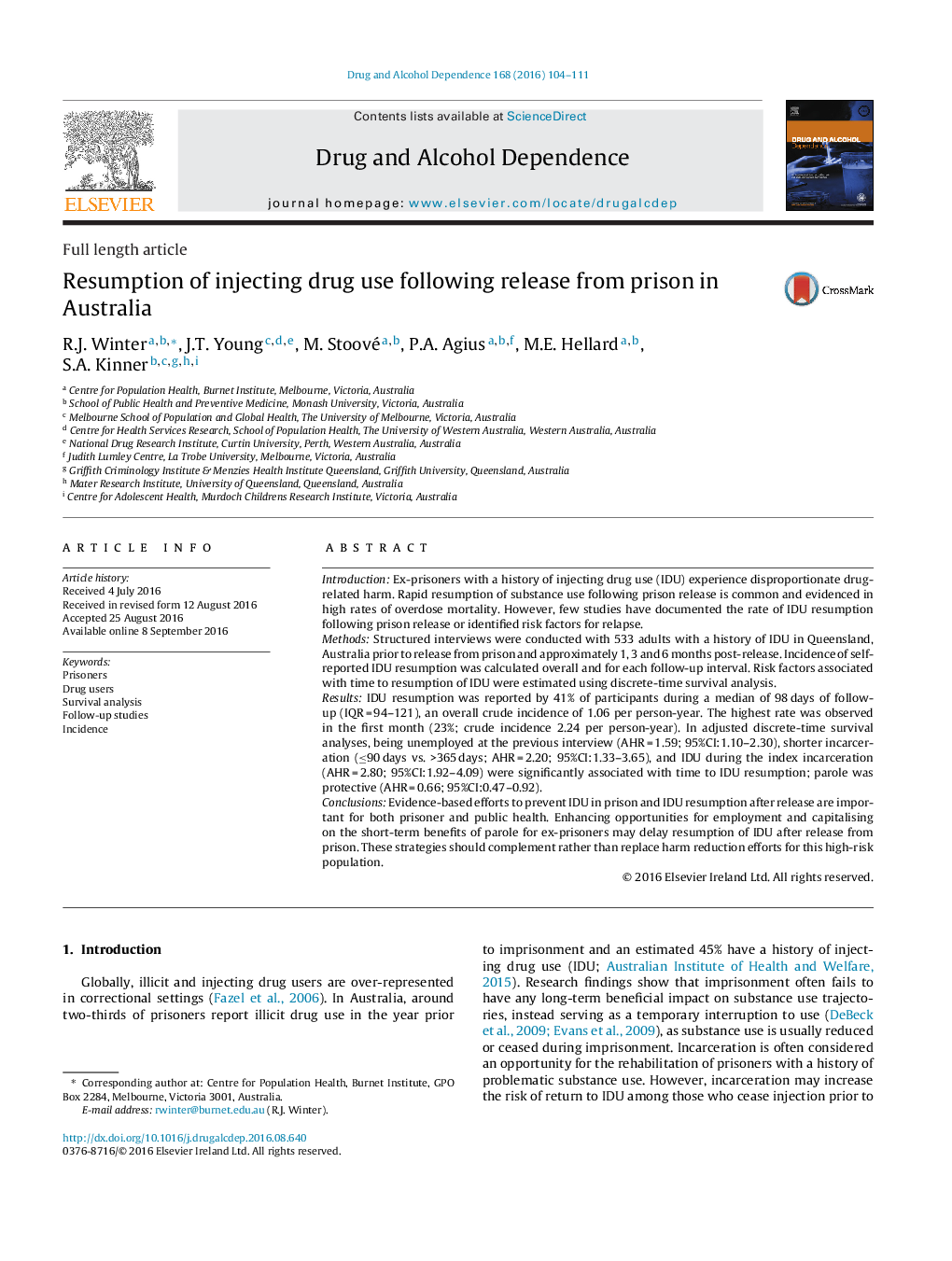| کد مقاله | کد نشریه | سال انتشار | مقاله انگلیسی | نسخه تمام متن |
|---|---|---|---|---|
| 5120454 | 1486123 | 2016 | 8 صفحه PDF | دانلود رایگان |
- 41% of 533 ex-prisoners with IDU history resumed IDU over 6 months after prison.
- The highest incidence of IDU resumption occurred within 1 month following release.
- Discrete-time survival analysis was used to examine predictors of IDU resumption.
- IDU in prison, post-release unemployment and shorter prison sentences predicted IDU.
- Release on parole initially reduced IDU risk but the effect decayed over time.
IntroductionEx-prisoners with a history of injecting drug use (IDU) experience disproportionate drug-related harm. Rapid resumption of substance use following prison release is common and evidenced in high rates of overdose mortality. However, few studies have documented the rate of IDU resumption following prison release or identified risk factors for relapse.MethodsStructured interviews were conducted with 533 adults with a history of IDU in Queensland, Australia prior to release from prison and approximately 1, 3 and 6 months post-release. Incidence of self-reported IDU resumption was calculated overall and for each follow-up interval. Risk factors associated with time to resumption of IDU were estimated using discrete-time survival analysis.ResultsIDU resumption was reported by 41% of participants during a median of 98 days of follow-up (IQR = 94-121), an overall crude incidence of 1.06 per person-year. The highest rate was observed in the first month (23%; crude incidence 2.24 per person-year). In adjusted discrete-time survival analyses, being unemployed at the previous interview (AHR = 1.59; 95%CI:1.10-2.30), shorter incarceration (â¤90 days vs. >365 days; AHR = 2.20; 95%CI:1.33-3.65), and IDU during the index incarceration (AHR = 2.80; 95%CI:1.92-4.09) were significantly associated with time to IDU resumption; parole was protective (AHR = 0.66; 95%CI:0.47-0.92).ConclusionsEvidence-based efforts to prevent IDU in prison and IDU resumption after release are important for both prisoner and public health. Enhancing opportunities for employment and capitalising on the short-term benefits of parole for ex-prisoners may delay resumption of IDU after release from prison. These strategies should complement rather than replace harm reduction efforts for this high-risk population.
Journal: Drug and Alcohol Dependence - Volume 168, 1 November 2016, Pages 104-111
